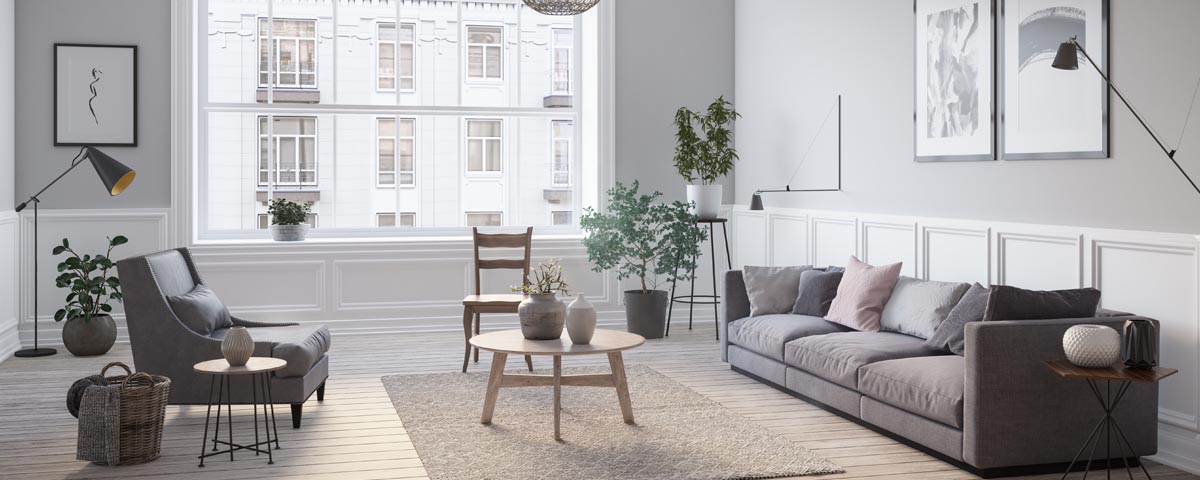Your home is your sanctuary, it is often where we feel most comfortable, relaxed and at ease. After a long day at work, running errands, or maybe even returning from a trip, there is no better feeling than returning to your home base. However, our homes are filled with noise generating machines. Reducing noise in your home can have many positive benefits for your conversations as well as your overall health and well being.
Unwanted noise can cause stress and sleepless nights, and can also affect our emotional well-being. It’s the invisible enemy that many homeowners simply put up with because they may not know solutions exist. Noise levels in your home can affect conversations, and even the volume you choose to listen to your TV or favorite music. Unconsciously increasing the volume isn’t the answer, as this can lead to overall increase to noise exposure and pose a more significant risk to your hearing health.
What you may not know is how loud your house can be. If you are in a semi-detached home or apartment these sounds can double! Every machine in your home contributes to the ambient noise level. Over time, this constant low level noise can potentially cause harm to your hearing cells. There are ways to test your noise exposure through free apps on iOS and Android phones such as Decibel X, NIOSH Sound Level Meter, and Too Noisy Pro. The best way to curb constant low level noise exposure to soundproof your home. While this sounds like an expensive fix, there are some relatively inexpensive ways to improve the noise levels in your home.
Researchers in the Minneapolis built a room called an Anechoic chamber allowing for complete silence. This room is known as the quietest place on Earth! In our own homes, complete silence is not the goal, rather we’re just looking to dampen the sounds. By following these quick tips and fixes you may find your home quieter than it once was and avoid unnecessary damage to your hearing.
Inexpensive Home Decor Fixes:
Drapes/Curtains
Using heavy fabric as window coverings will reduce the outdoor street noise, as well as act as a sound dampener for sounds produced within the home.
Rugs
Area rugs, or carpet are another excellent sound insulator. Hardwood can act as a drumhead allowing sounds to reverberate throughout the whole house.
Bookshelves
If you do share a wall with your neighbour, it’s best to line the walls with bookshelves and wall decor. The bookcase will dampen the noise further if it’s fully stocked with books, another great sound insulator.
Wall Hangings
Pictures and Tapestries are another great wall insulator for sound.
Furniture Positioning
The way your furniture is placed can help with sound movement throughout your home. Nowadays, most modern homes are open-concept, however these designs allow sounds to flow freely throughout the whole space with few barriers standing in their way. If your bed or sofa is tucked against an exterior wall or a shared wall, consider moving it to a different wall or slightly inching it away from sitting directly against it.
Soundproofing the Laundry Room/ Air Conditioner
There are places in our home that contribute to the most noise. The laundry room and the air conditioner. In recent years, laundry rooms have been moved up from the basement and are found on the main floors or near the bedroom. We suggest investing in a soundproof panel for your laundry room door, and potentially even your air conditioner to improve overall ambient sound levels in the house.
Older homes have tons of charm, however sound insulation back in the day wasn’t nearly as advanced as it is today. In addition, depending on your homes age, things may have shifted slightly allowing more airflow and therefor sound to flow freely through cracks and crevices in your home. Here are a few quick fixes around that you can make to provide strong sound insulation for years to come.
Sealing any small opening through which air and noise can enter a room is the cheapest, fastest and most efficient way to block noise. You can test for sound leaks by darkening a room to see where light, and therefore sound seeps in.
Quick Home Improvements
- Purchasing ½ inch thick rubber or cork pads and installing them under the legs or corners of large heavy appliances will stop vibrations from transferring to the floor.
- Move appliances at least 2 inches away from the walls.
- Consider using rubber pads under smaller appliances, dish racks, near your stove, and in your sink basin to reduce the sharp clanking of cookware, dinnerware and utensils on hard surfaces.
Doors
- Having solid doors in your home will ensure less sound passes through them. Instead of investing in new doors, you can check for high quality antique or salvaged ones at secondhand and architectural salvage stores such as ReStore.
- Weather stripping is another great tool to seal all gaps between doors.
- A door sweep or rubber threshold seals can close off the space below the door.
Windows
- Caulk existing windows and equip them with gaskets to provide an airtight seal.
- Double-paned windows provide noticeably improved soundproofing thanks to the air cavity between the two panes.
Landscaping
- Planting trees or hedges are a good way to deter road traffic noises and also act as a visual block from the source. Conifers and evergreens are the most effective year-round noise blockers.
- Fences act as a barrier for sound as well, make sure it’s a solid and continuous as possible for maximum noise reduction.
- Another way to mask sound is through ornamental grasses that rustle in the wind providing a white noise effect, or even a fountain will do the trick.
- The most obvious solution would be to switch from your motorized lawn maintenance tools to old-fashioned rakes, push mowers and clippers.






